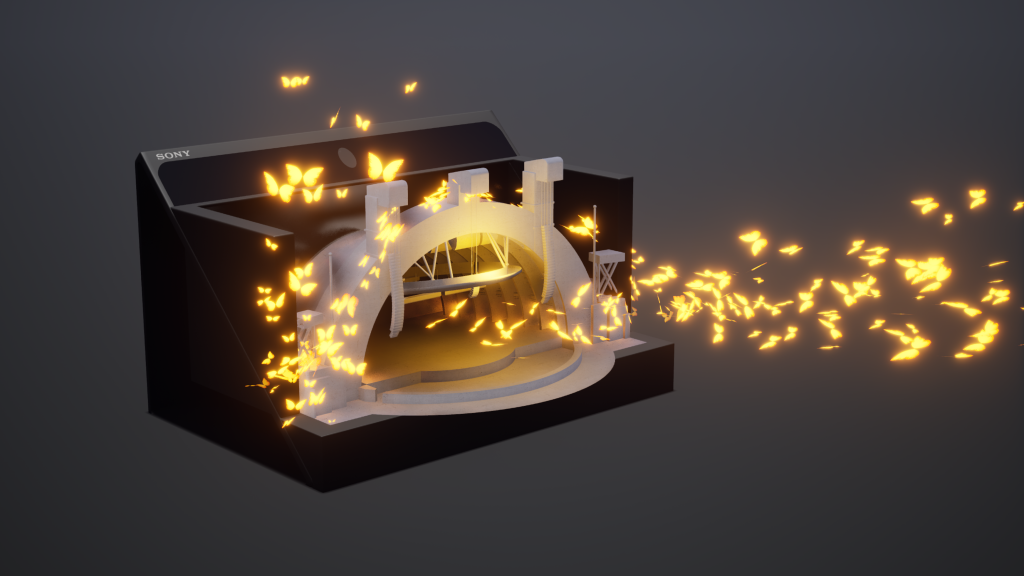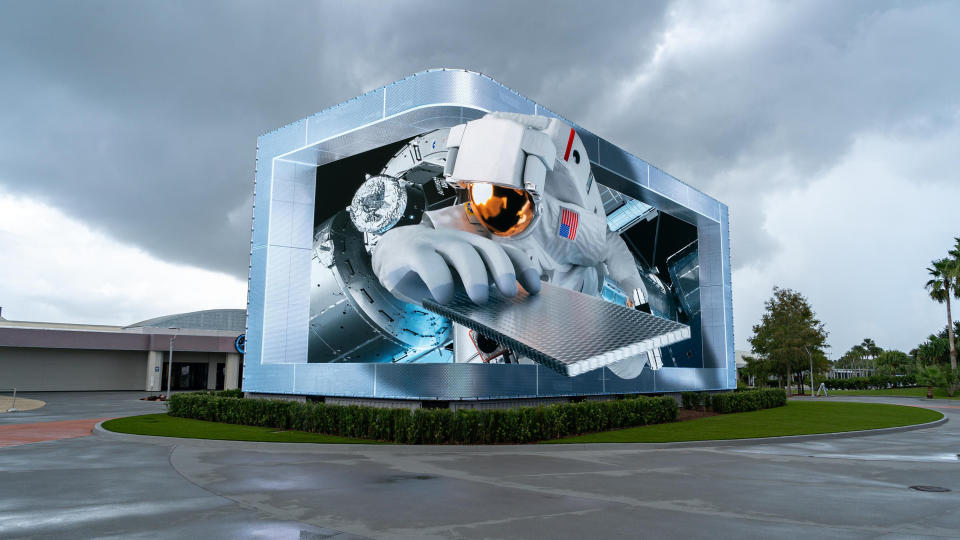AOIN Turns to Sony’s Spatial Reality Display to Bring Disney's Encanto to Life

Los Angeles-based All of it Now (AOIN)—a team of technologists and content creators—provides digital content and immersive experiences for brands, agencies, entertainers, and events. Their team provides everything from design, previsualization (previs), and virtual location scouting to augmented reality/extended reality (AR/XR) consultation and camera tracking data. One of their most recent projects was creating an AR-enabled presentation of Disney’s Encanto which ran at the Hollywood Bowl, an outdoor venue in Los Angeles. In order to bring an authentic experience of this magnitude to life, AOIN relied on Sony’s Spatial Reality Display (SRD), which enables highly realistic, three-dimensional content without the use of special glasses or VR headsets.
SCN Gets Immersive

* Houston, We Don't Have a Problem—Check Out This 3,000-Square-Foot Video Display
* It's a Barbie World—Watch This Godzilla-Sized Barbie Step Out of a Billboard
* Post Malone Surprises Times Square Guests with a Free Concert in a... Billboard?
For Berto Mora, AOIN’s chief technology officer, the main selling points are the Spatial Reality Display’s integration with Unreal Engine, its capacity to showcase and visualize 3D content without wearing glasses, the ability to use it for virtual production, and the opportunity to showcase massive content in a realistic way from a tabletop device. Shortly after receiving a demo, AOIN bought a unit to use in-house.
Danny Firpo, cofounder of AOIN, used the SRD to unlock new forms of creativity and help streamline their pre-production workflow. Speaking of the Encanto show at the Hollywood Bowl, he explained, “First, we used the Spatial Reality Display to help visualize the Hollywood Bowl venue. Additionally, because the content is motivated by projection, many of the effects used in the AR broadcast were particle-based. Sony’s display provided visuals in both a 2D and a 3D space, enabling a better understanding of the paths that the particles were taking, which allowed us to spatialize and contextualize them.”
[Introducing the Latest Sony Professional BRAVIA Displays]
Beyond a better understanding of the particles, the SRD was also beneficial in finding camera positions. “It was really helpful to see the Bowl in a 3D space and use that for identifying camera positions and cable paths, collaboratively," Firpo added. "That 3D environment served as a vital pre-production tool. Using this display provided us with some special moments. We coordinated closely with the director of photography and individual camera operators to show them the path in Unreal within the Hollywood Bowl, which was helpful for planning the cameras’ paths with the jib. We were able to see dramatic plans as a result of seeing the camera movements in the 3D space.”
“Augmented reality is new for a lot of people, so having a tool that allows directors and others to visualize it and gives them an understanding of what we’re doing is important," added Nicole Plaza, AOIN’s executive producer. "It allows them to be immersed in that 3D space and understand our work and workflows more quickly.”
“We work in a lot of 3D spaces and 3D worlds through the engines, specifically Unreal Engine," Mora added. "It’s difficult to convey what you’re looking at through a flat, two-dimensional screen. The beautiful thing about the SRD is that you can now visualize that content in 3D and better understand it, instead of asking someone to imagine it in 3D. With that comes the ability to play with depth and the perception of 3D with the human eye. And that all makes the content more valuable.”
Firpo also appreciates the presentation abilities that the SRD offers to customers. “The display allows us to literally be able to look around and navigate the spaces intuitively. It creates a transparent technology layer for those who aren’t used to Unreal environments. In addition, the Spatial Reality Display is very easy for us and for clients to use. You don’t have to use any buttons to navigate it. And at the end of the day, everyone appreciates the technology and loves seeing the content.”
[Everything We Know about the Vegas Sphere, So Far—A Running Blog]
Speaking of clients, AOIN has received positive responses to the SRD from creatives. “Production designers often deal with the 2D space, so for them to see their designs in a 3D space before a final version is completed is helpful to provide context and spatial reference," explained Firpo. "To also see those AR effects interacting with production design pieces is a very special thing for a lot of these production teams and we’ve received some really great feedback. Beyond just seeing the final output or mockups, we can provide insight into the whole process."
The Spatial Reality Display is comprised of several innovative features including a real-time rendering algorithm, a micro-optical lens, easy integration and a proprietary high-speed vision sensor. Mora shared that one of his favorite aspects of the display is the eye-sensing technology. “The gaze tracking of your eyes lets you know this isn’t a conventional display. The real-time perspective shift is a huge selling point that makes it much more interesting. This feature complements XR environments nicely.”
Similarly, AOIN appreciates the ability to view their content unencumbered by glasses. “As somebody who already wears glasses every day, there’s a fatigue layer and added friction," Firpo said. "The weight of the glasses on your face limits the amount of time you can use them. It can also cause strain on your neck, and glasses can hurt your face and make you sweat. There’s also the potential for dirt and smudges to present themselves, which can degrade the viewing experience and affect the image quality.”
Firpo explained that his and his clients’ familiarity and experience with the Sony brand also contributed to AOIN’s decision to choose the SRD. “The Sony brand is trusted by us, our clients, producers, and camera operators," he said. "Using a Sony display adds a level of confidence, as well as compatibility since we’re often using Sony’s cameras on-site. To have a Sony pipeline that uses multiple different products like the VENICE and Spatial Reality Display gives us peace of mind that the color reproduction is correct and accurate."

